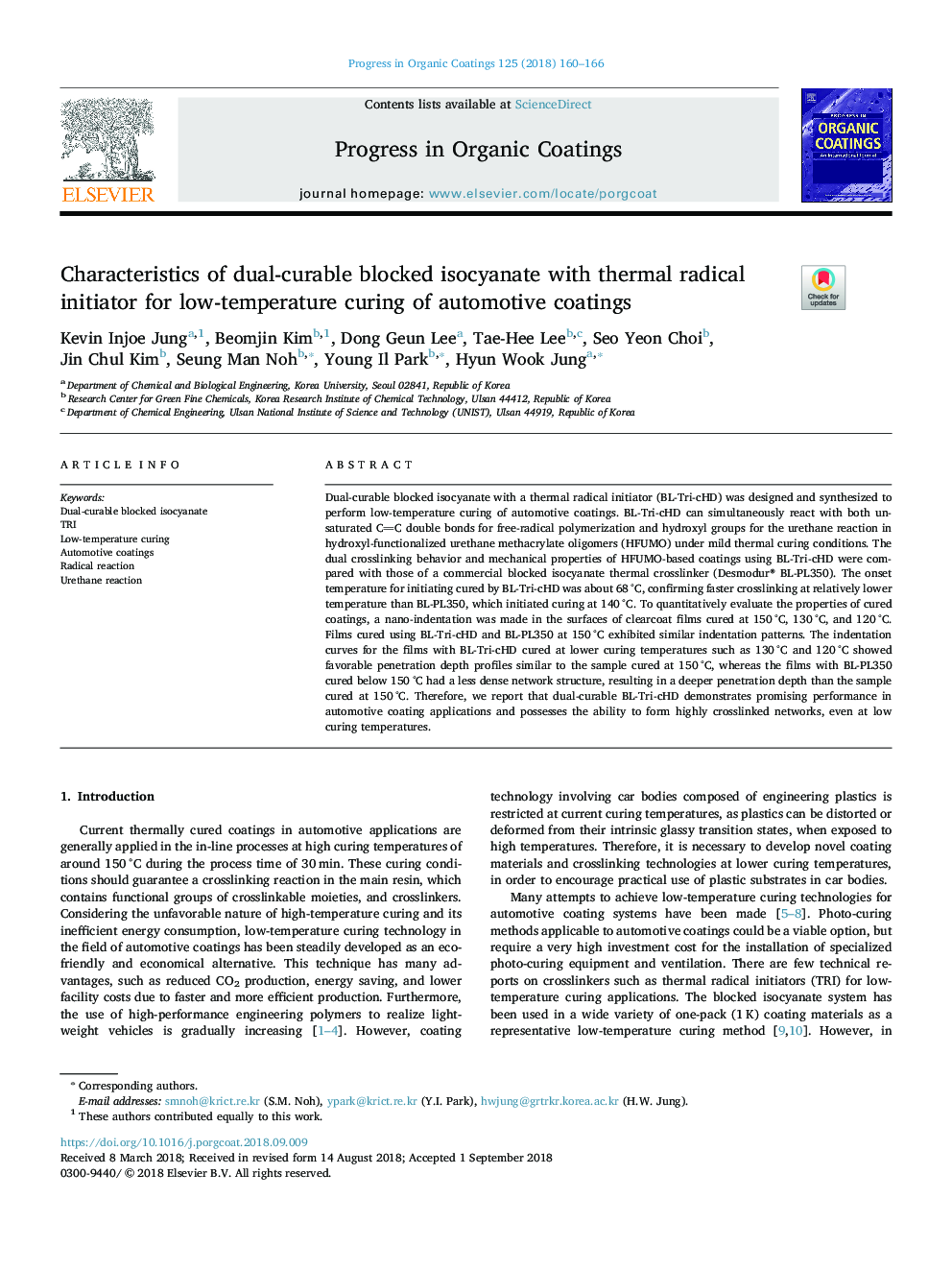| Article ID | Journal | Published Year | Pages | File Type |
|---|---|---|---|---|
| 10140023 | Progress in Organic Coatings | 2018 | 7 Pages |
Abstract
Dual-curable blocked isocyanate with a thermal radical initiator (BL-Tri-cHD) was designed and synthesized to perform low-temperature curing of automotive coatings. BL-Tri-cHD can simultaneously react with both unsaturated CC double bonds for free-radical polymerization and hydroxyl groups for the urethane reaction in hydroxyl-functionalized urethane methacrylate oligomers (HFUMO) under mild thermal curing conditions. The dual crosslinking behavior and mechanical properties of HFUMO-based coatings using BL-Tri-cHD were compared with those of a commercial blocked isocyanate thermal crosslinker (Desmodur® BL-PL350). The onset temperature for initiating cured by BL-Tri-cHD was about 68â°C, confirming faster crosslinking at relatively lower temperature than BL-PL350, which initiated curing at 140â°C. To quantitatively evaluate the properties of cured coatings, a nano-indentation was made in the surfaces of clearcoat films cured at 150â°C, 130â°C, and 120â°C. Films cured using BL-Tri-cHD and BL-PL350 at 150â°C exhibited similar indentation patterns. The indentation curves for the films with BL-Tri-cHD cured at lower curing temperatures such as 130â°C and 120â°C showed favorable penetration depth profiles similar to the sample cured at 150â°C, whereas the films with BL-PL350 cured below 150â°C had a less dense network structure, resulting in a deeper penetration depth than the sample cured at 150â°C. Therefore, we report that dual-curable BL-Tri-cHD demonstrates promising performance in automotive coating applications and possesses the ability to form highly crosslinked networks, even at low curing temperatures.
Related Topics
Physical Sciences and Engineering
Chemical Engineering
Process Chemistry and Technology
Authors
Kevin Injoe Jung, Beomjin Kim, Dong Geun Lee, Tae-Hee Lee, Seo Yeon Choi, Jin Chul Kim, Seung Man Noh, Young Il Park, Hyun Wook Jung,
